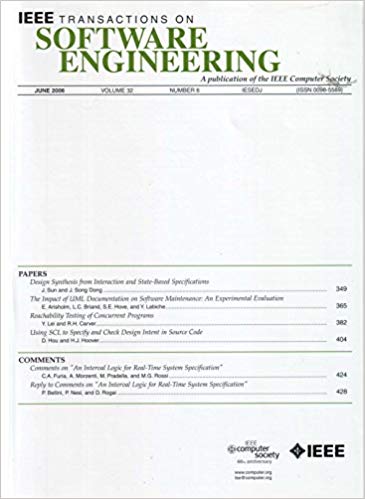Privacy Impact Tree Analysis (PITA): A Tree-Based Privacy Threat Modeling Approach
IF 5.6
1区 计算机科学
Q1 COMPUTER SCIENCE, SOFTWARE ENGINEERING
引用次数: 0
Abstract
Threat modeling involves the early identification, prioritization and mitigation of relevant threats and risks, during the design and conceptualization stages of the software development life-cycle. Tree-based analysis is a structured risk analysis technique that starts from the articulation of possible negative outcomes and then systematically refines these into sub-goals, events or intermediate steps that contribute to this outcome becoming reality. While tree-based analysis techniques are widely adopted in the area of safety (fault tree analysis) or in cybersecurity (attack trees), this type of risk analysis approach is lacking in the area of privacy. To alleviate this, we present privacy impact tree analysis (PITA), a novel tree-based approach for privacy threat modeling. Instead of starting from safety hazards or attacker goals, PITA starts from listing the potential privacy impacts of the system under design, i.e., specific scenarios in which the system creates or contributes to specific privacy harms. To accommodate this, PITA provides a taxonomy, distinguishing between privacy impact types that pertain (i) data subject identity, (ii) data subject treatment, (iii) data subject control and (iv) treatment of personal data. In addition, a pragmatic methodology is presented that leverages both the hierarchical nature of the tree structures and the early ranking of impacts to focus the privacy engineering efforts. Finally, building upon the privacy impact notion as captured in the privacy impact trees, we provide a refinement of the foundational concept of the overall or aggregated ‘privacy footprint’ of a system. The approach is demonstrated and validated in three complex and contemporary real-world applications, through which we highlight the added value of this tree-based privacy threat analysis approach that refocuses on privacy harms and impacts.隐私影响树分析:一种基于树的隐私威胁建模方法
在软件开发生命周期的设计和概念化阶段,威胁建模涉及相关威胁和风险的早期识别、优先级排序和缓解。基于树的分析是一种结构化的风险分析技术,它从可能的负面结果的表达开始,然后系统地将这些结果提炼成促成这一结果成为现实的子目标、事件或中间步骤。虽然基于树的分析技术在安全(故障树分析)或网络安全(攻击树)领域被广泛采用,但这种类型的风险分析方法在隐私领域缺乏。为了缓解这种情况,我们提出了隐私影响树分析(PITA),这是一种基于树的隐私威胁建模新方法。PITA不是从安全隐患或攻击者目标出发,而是从列出设计中的系统的潜在隐私影响开始,即系统造成或促成特定隐私危害的特定场景。为了适应这一点,PITA提供了一个分类法,区分涉及(i)数据主体身份、(ii)数据主体处理、(iii)数据主体控制和(iv)个人数据处理的隐私影响类型。此外,提出了一种实用的方法,利用树结构的层次性质和影响的早期排序来集中隐私工程工作。最后,在隐私影响树中捕获的隐私影响概念的基础上,我们对系统的总体或聚合“隐私足迹”的基本概念进行了细化。该方法在三个复杂的当代现实世界应用中进行了演示和验证,通过这些应用,我们强调了这种基于树的隐私威胁分析方法的附加价值,该方法重新关注隐私危害和影响。
本文章由计算机程序翻译,如有差异,请以英文原文为准。
求助全文
约1分钟内获得全文
求助全文
来源期刊

IEEE Transactions on Software Engineering
工程技术-工程:电子与电气
CiteScore
9.70
自引率
10.80%
发文量
724
审稿时长
6 months
期刊介绍:
IEEE Transactions on Software Engineering seeks contributions comprising well-defined theoretical results and empirical studies with potential impacts on software construction, analysis, or management. The scope of this Transactions extends from fundamental mechanisms to the development of principles and their application in specific environments. Specific topic areas include:
a) Development and maintenance methods and models: Techniques and principles for specifying, designing, and implementing software systems, encompassing notations and process models.
b) Assessment methods: Software tests, validation, reliability models, test and diagnosis procedures, software redundancy, design for error control, and measurements and evaluation of process and product aspects.
c) Software project management: Productivity factors, cost models, schedule and organizational issues, and standards.
d) Tools and environments: Specific tools, integrated tool environments, associated architectures, databases, and parallel and distributed processing issues.
e) System issues: Hardware-software trade-offs.
f) State-of-the-art surveys: Syntheses and comprehensive reviews of the historical development within specific areas of interest.
 求助内容:
求助内容: 应助结果提醒方式:
应助结果提醒方式:


